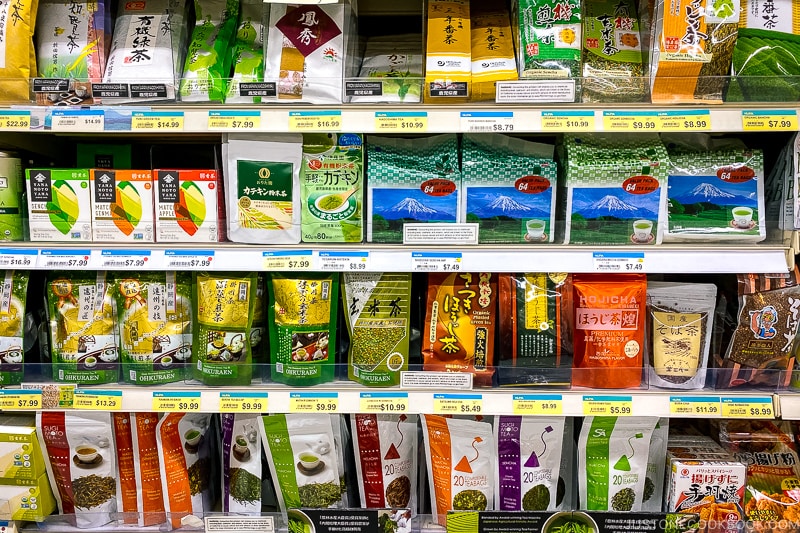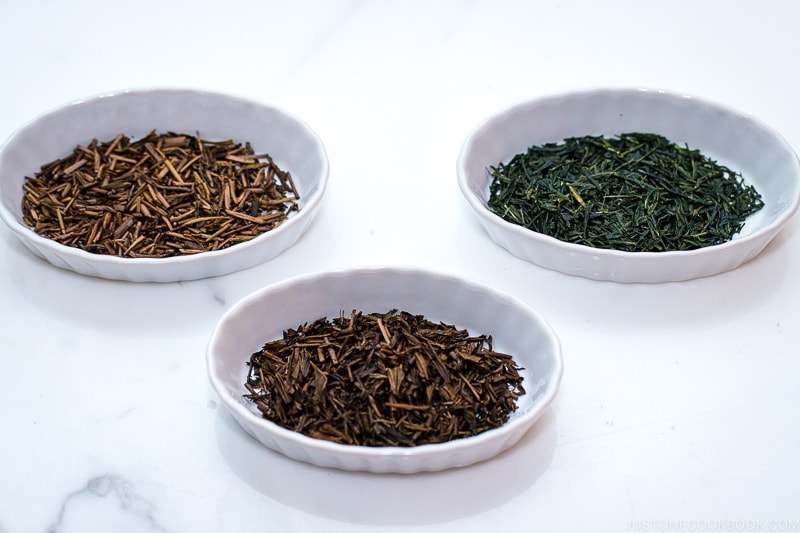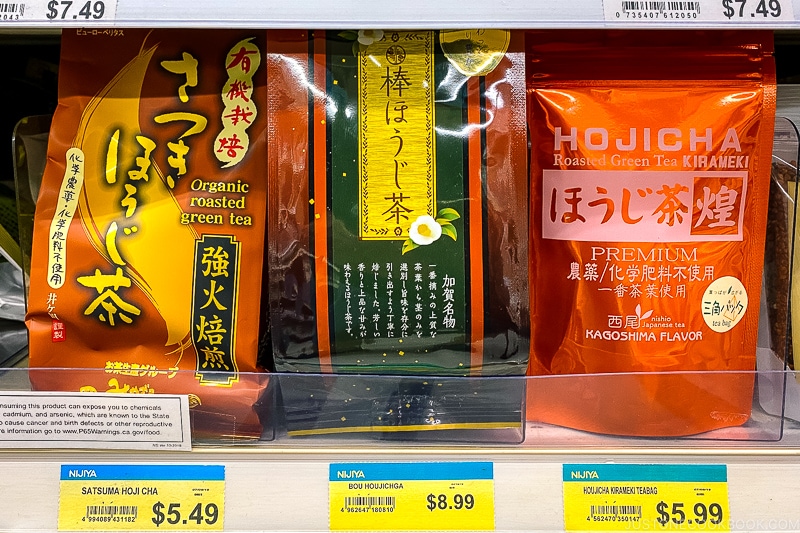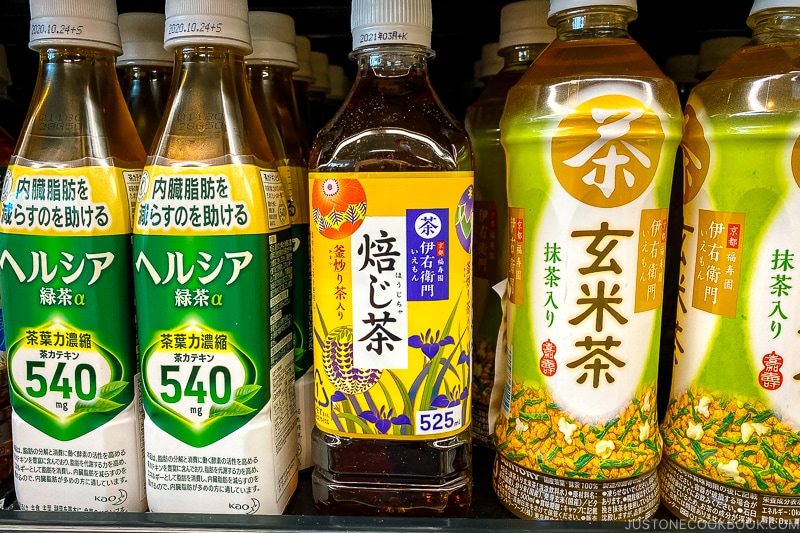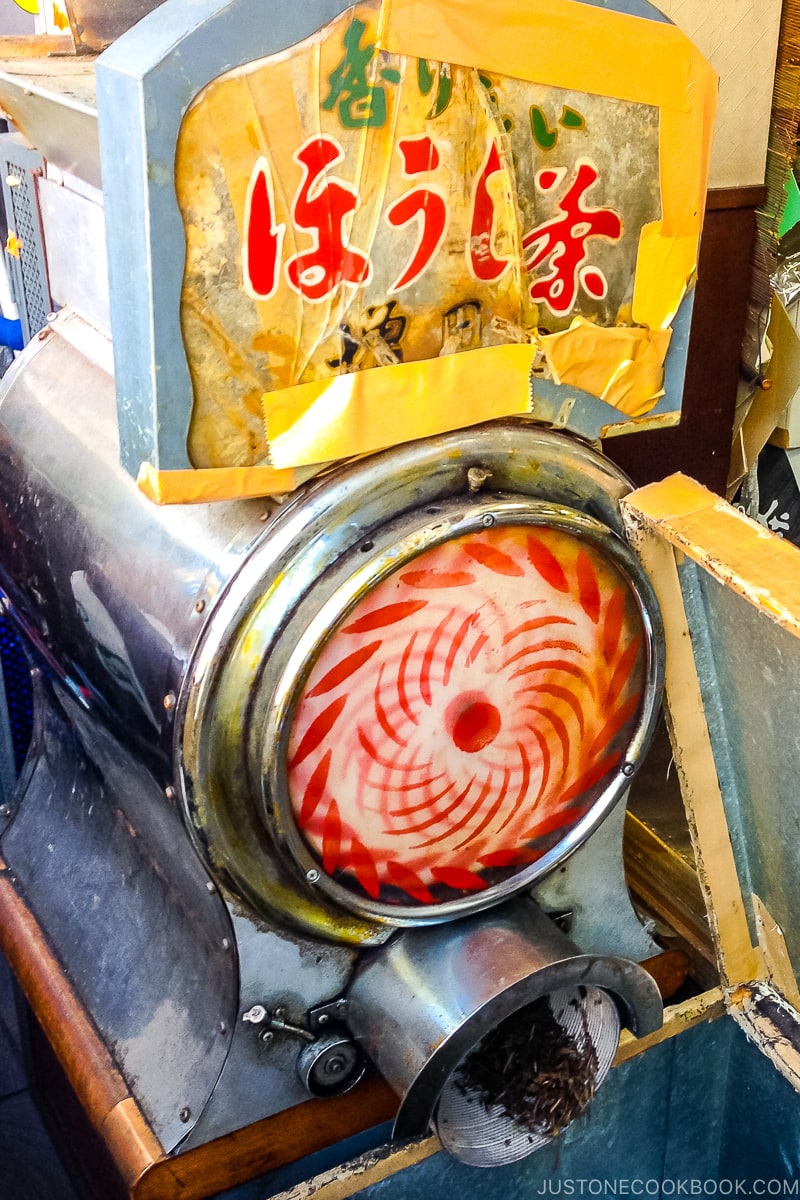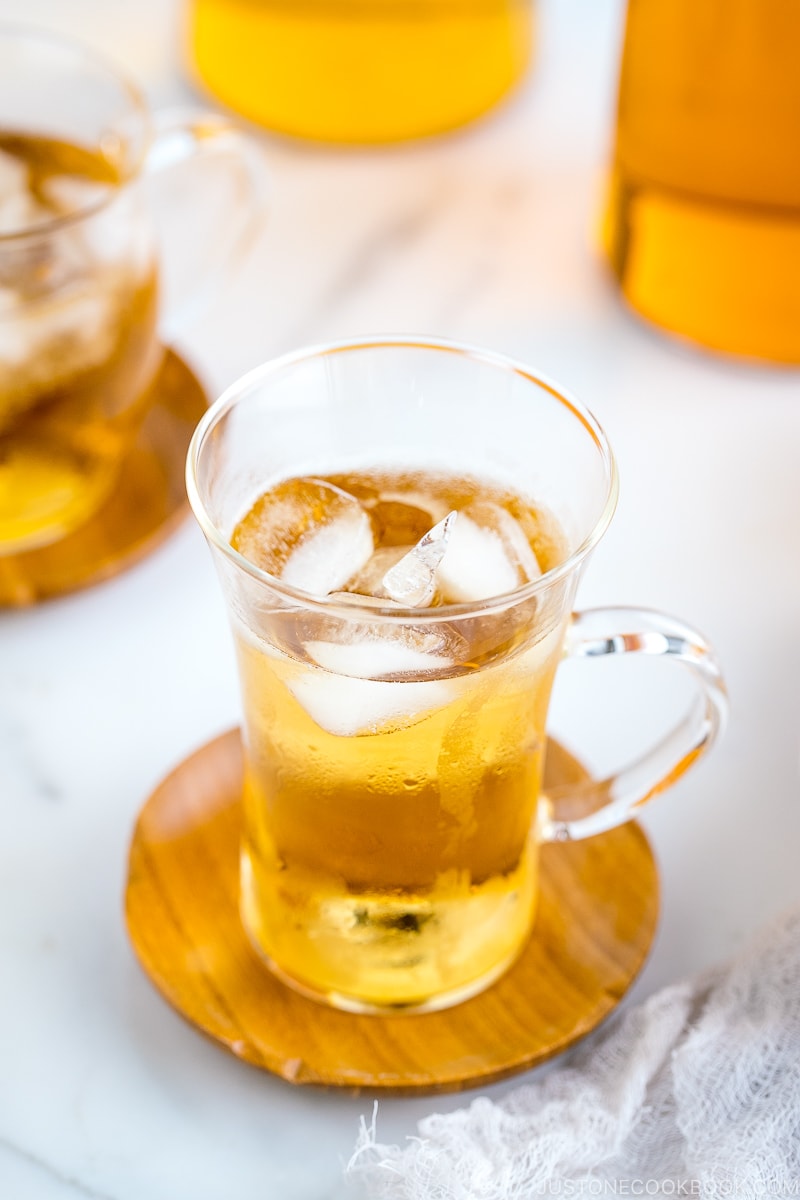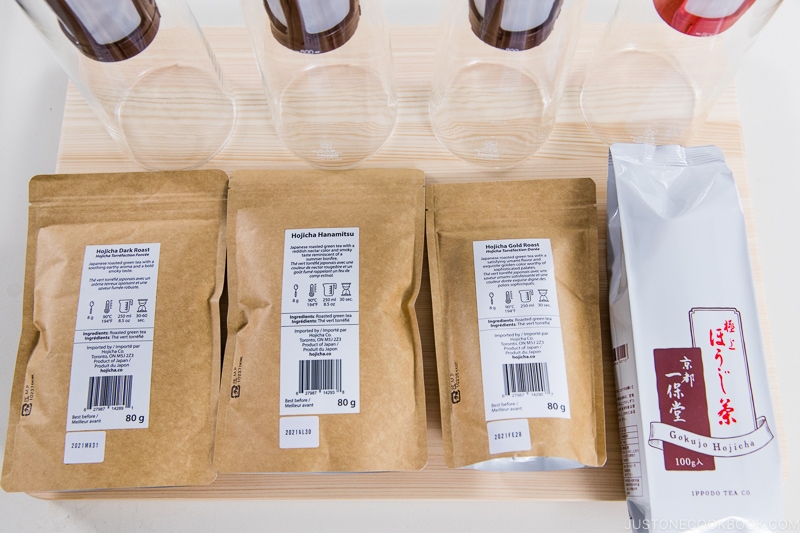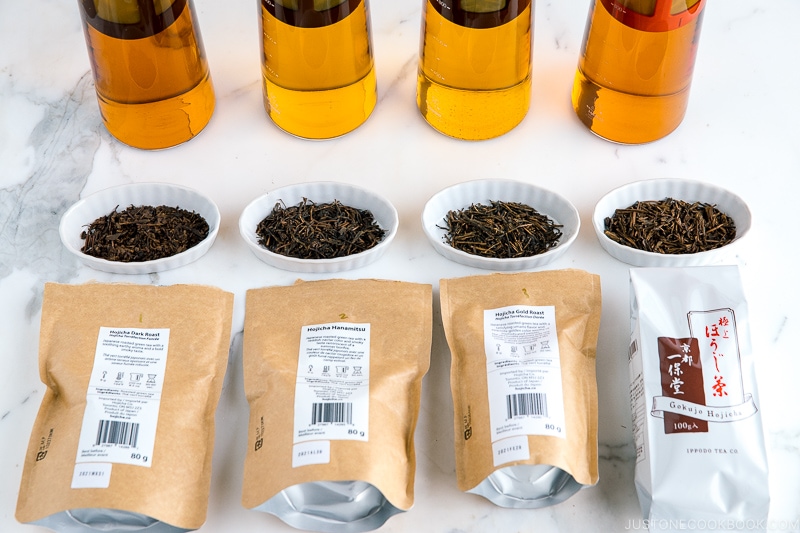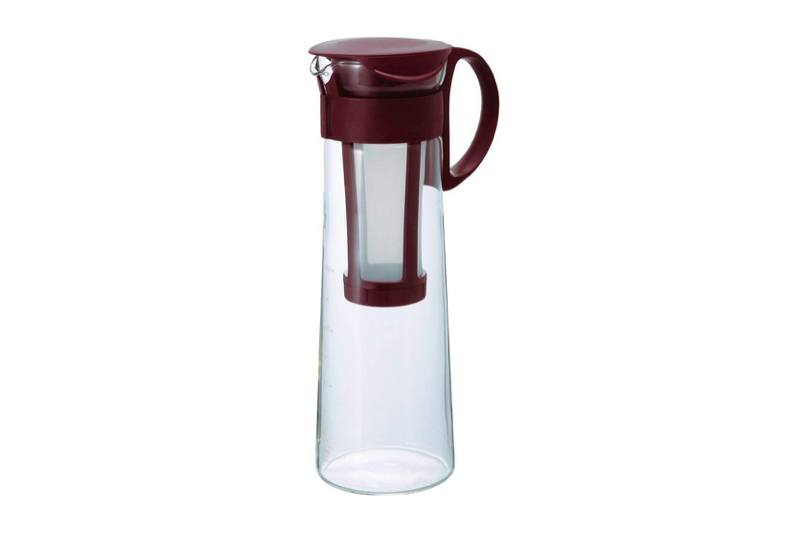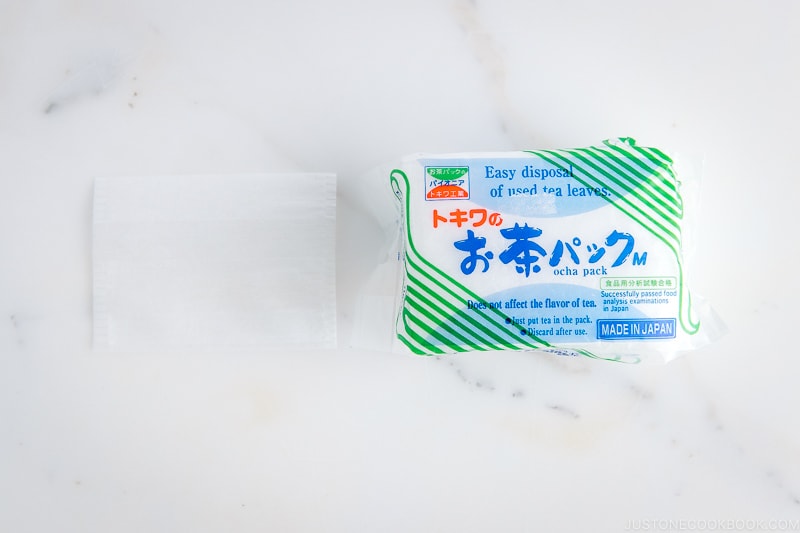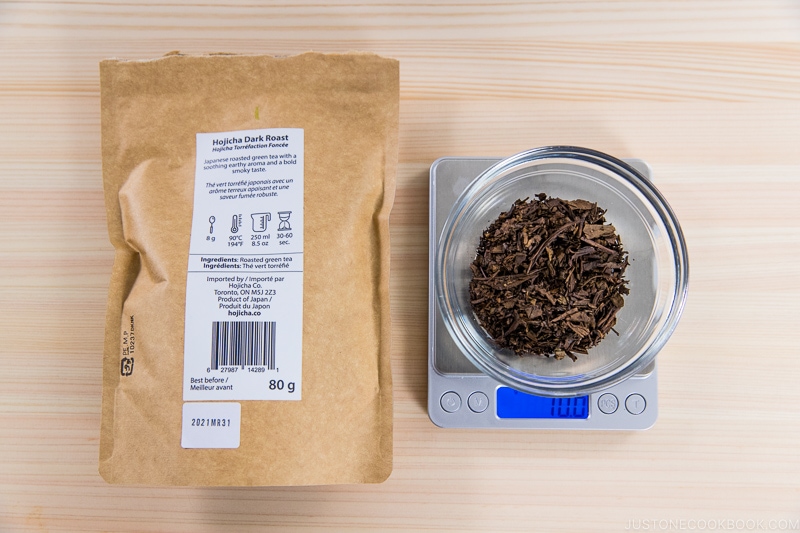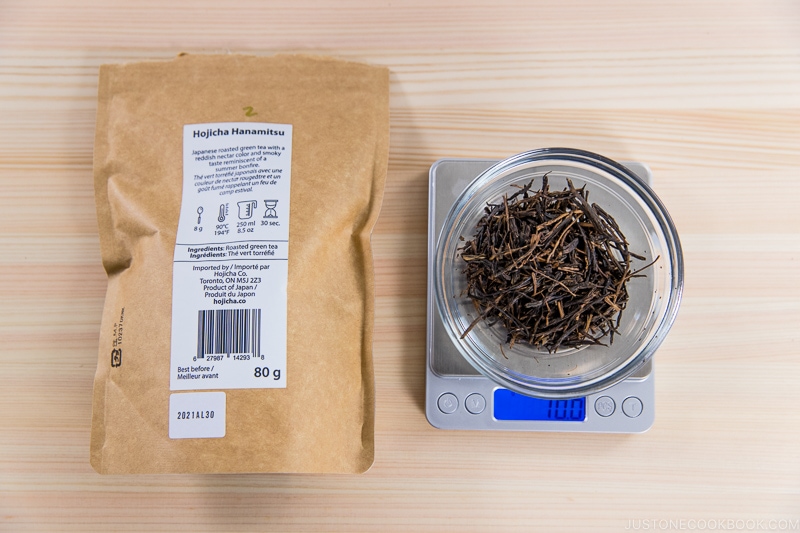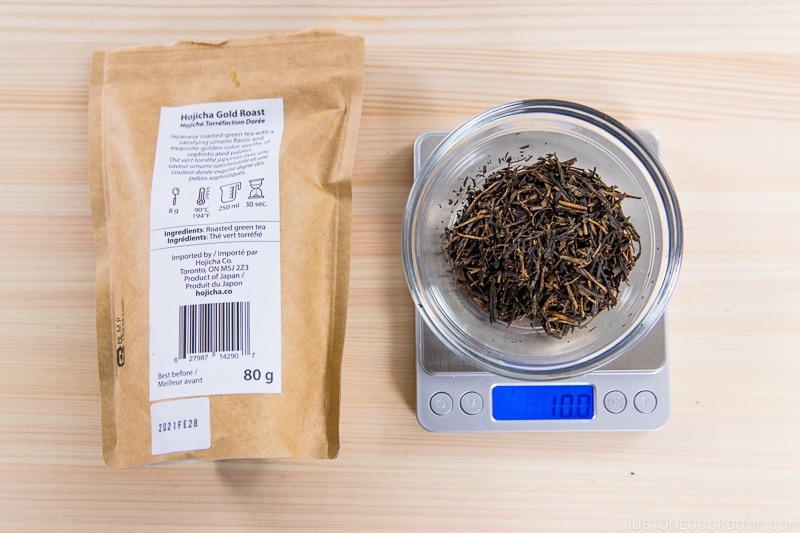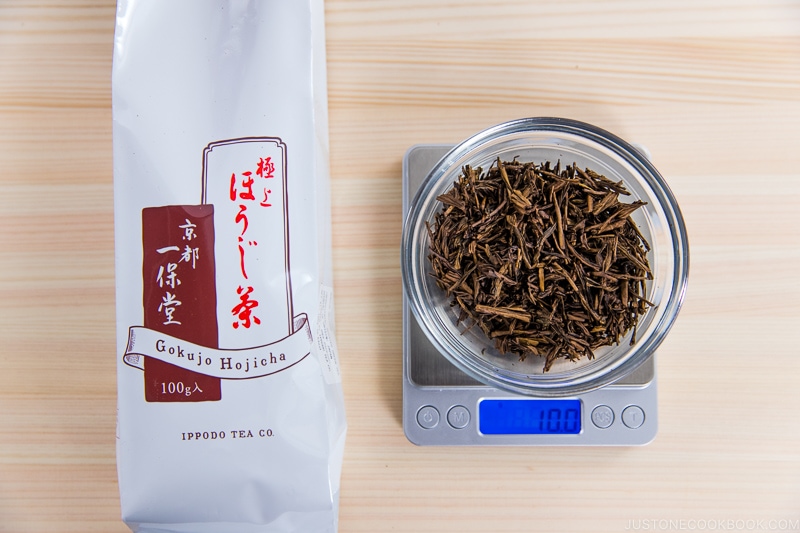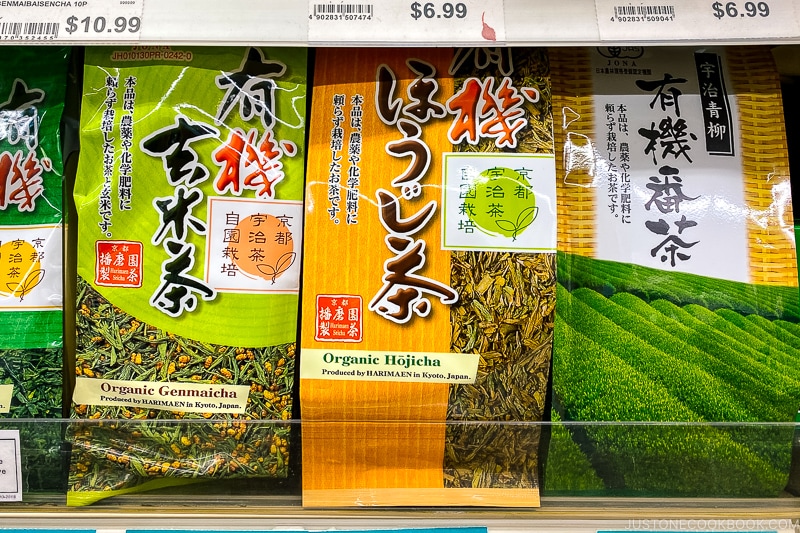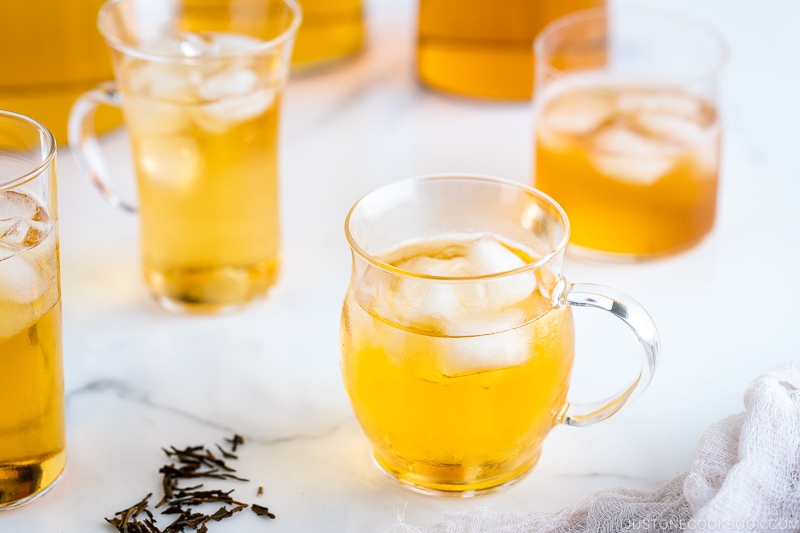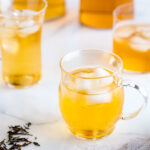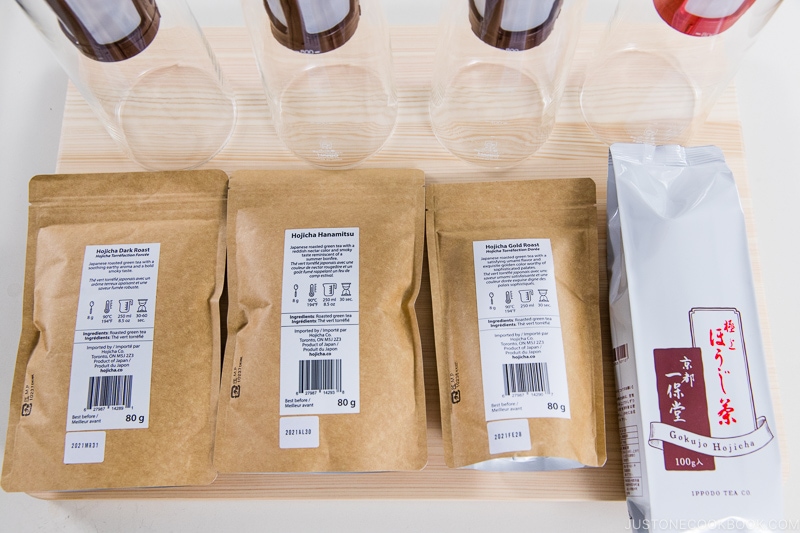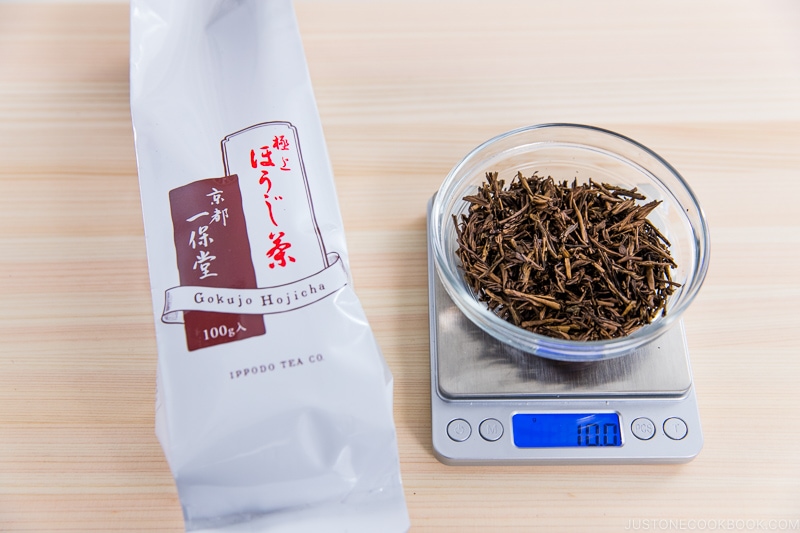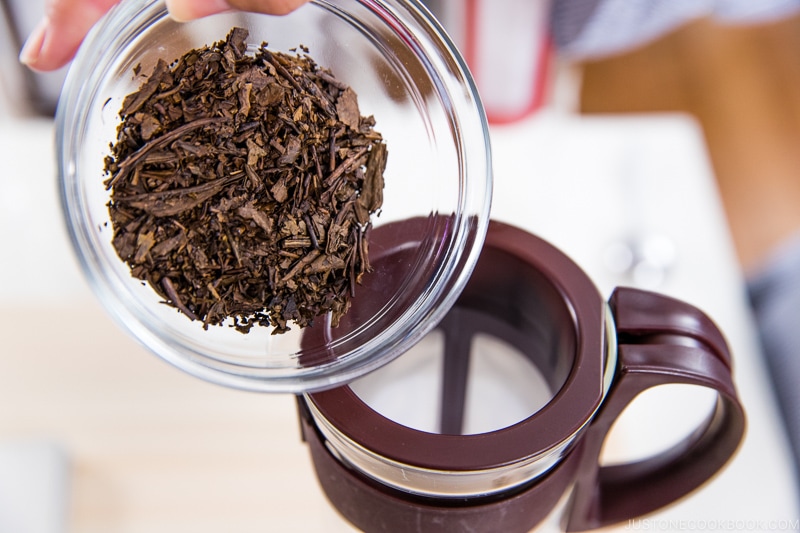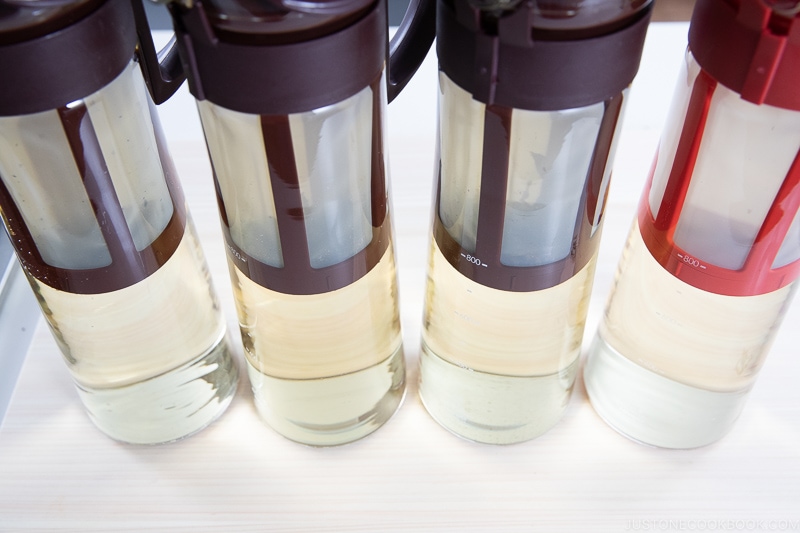Our family drinks a lot of tea, especially during the hot summer days. We try to avoid sugary drinks as they are loaded with calories and seem to just make us even more thirsty after drinking. Our drinks of choice during the hot days are cold brew hojicha (焙じ茶, ほうじ茶) or mugicha (barley tea 麦茶). Both teas contain very little to no caffeine and are remarkably flavorful.
Japanese Green Tea Basics
You’ve probably heard of matcha for Japanese green tea but may not be as familiar with the rest. Let’s have a quick glance at some of the basics today.
Types of Japanese Green Tea
Sencha vs. Hojicha
Take a look below and you can see the difference between hojicha (brown stems and leaves) and sencha (green leaves) on the right. The sencha leaves are much more refined and consistent with their shapes. There are many variations of each green tea type, depending on where and how they are grown. The quality of the leaves and most importantly when they are harvested (or flushed) are some of the factors that will influence the taste and ultimately the price of the tea leaves.
Types of Hojicha
Hojicha is essentially the same as green tea but roasted. It is a relatively new tea invented in Kyoto in the 1920s. For roasting hojicha at high heat, it can be processed with an earthenware pot or a metal drum. While roasting, the unmistakable tea aroma is so tantalizing and easily fills the air. There’s a tea shop near Asakusa Station in Tokyo that roasts hojicha and you can smell it from blocks away. The roasting process turns the tea leaves from its signature green to an amber-brown color. Hojicha is one of our family’s favorites as it’s low in caffeine and tannin. How? The roasting process reduces the caffeine in the tea and rids of the astringency from the tannin. Similar to other green teas, there are various grades and types of hojicha. The main categories being regular hojicha and kuki-hojicha (茎ほうじ茶), which is the stems only.
Best Hojicha for Cold Brew
We wanted to test the best variety to make cold brew hojicha, so we tested four different types (some teas are courtesy of hojicha.co). To make the test more equal, we left kuki-hojicha (stems only) out of the comparison.
Hojicha Taste Test
For this taste test, the biggest difference with the tea leaves is when they were harvested. The types below aren’t official classification, just the various hojicha we’ve tried.
Equipment for Cold Brew
My recommendation for the cold-brewing method is to use a pot or disposable tea bags below. Hario Mizudashi Cold Brew Coffee Pot (1000 ml) Ocha Pack (Disposable Bag)
Hojicha Tasting Notes
Each of the tea had its own characteristics since they were harvested at different times, and whether they contained stems. Here are our tasting notes. The dark roasted leaves have a classic hojicha smell, like burnt candy. After brewing, the tea had a very faint aroma with a hint of honey. The taste was unexpectedly mellow and light tasting. The late harvest leaves didn’t smell like classic hojicha and retained green tea’s vegetative tones. The tea had a very strong smell but not pleasant. The flavor was light and floral, rather than the caramel taste of hojicha. The gold roast smells like you’re walking past freshly roasted hojicha. Delicate, light, with just a hint of tea leaves. The brewed tea was light and refined. The tea lacked the sweetness of hojicha.
Cold Brew Hojicha – Leaves and Stem
What we’ve discovered for hojicha is that the tea leaves provided the aroma and the stems provided the sweet taste. The quality of the tea leaves will affect its smell and the presence of stems determines the taste. It was interesting for us to discover that when the leaves were harvested had such a strong impact on the aroma of tea. In case you’re curious about what kuki-hojicha (stem only) tastes like, it has the unique sweetness of hojicha but almost no aroma at all. The next time you’re in an Asian or Japanese supermarket and see hojicha, you know what to grab to make a cool drink for the family to enjoy.
Equipment We Use for Cold Brew Hojicha
We usually have two or three pitchers of cold brew hojicha at home to quench our thirst. We use the same cold brew coffee maker for hojicha as Cold Brew Coffee. Wish to learn more about Japanese cooking? Sign up for our free newsletter to receive cooking tips & recipe updates! And stay in touch with me on Facebook, Pinterest, YouTube, and Instagram.

